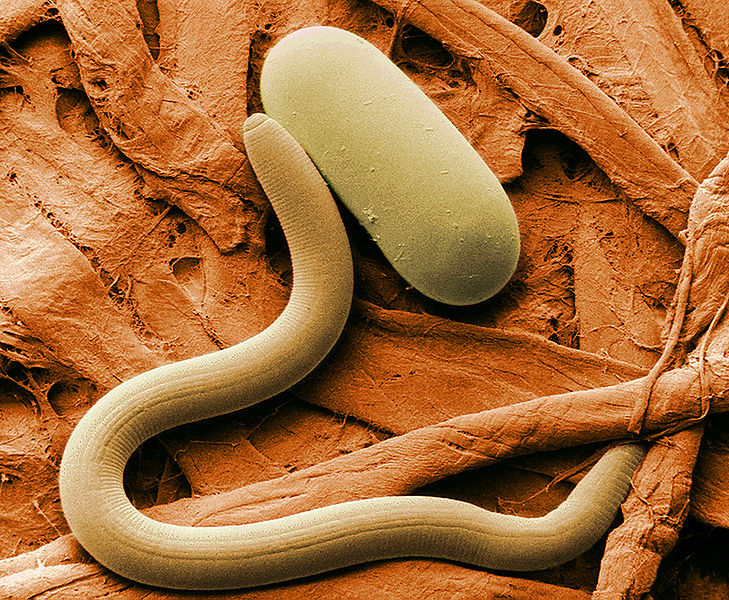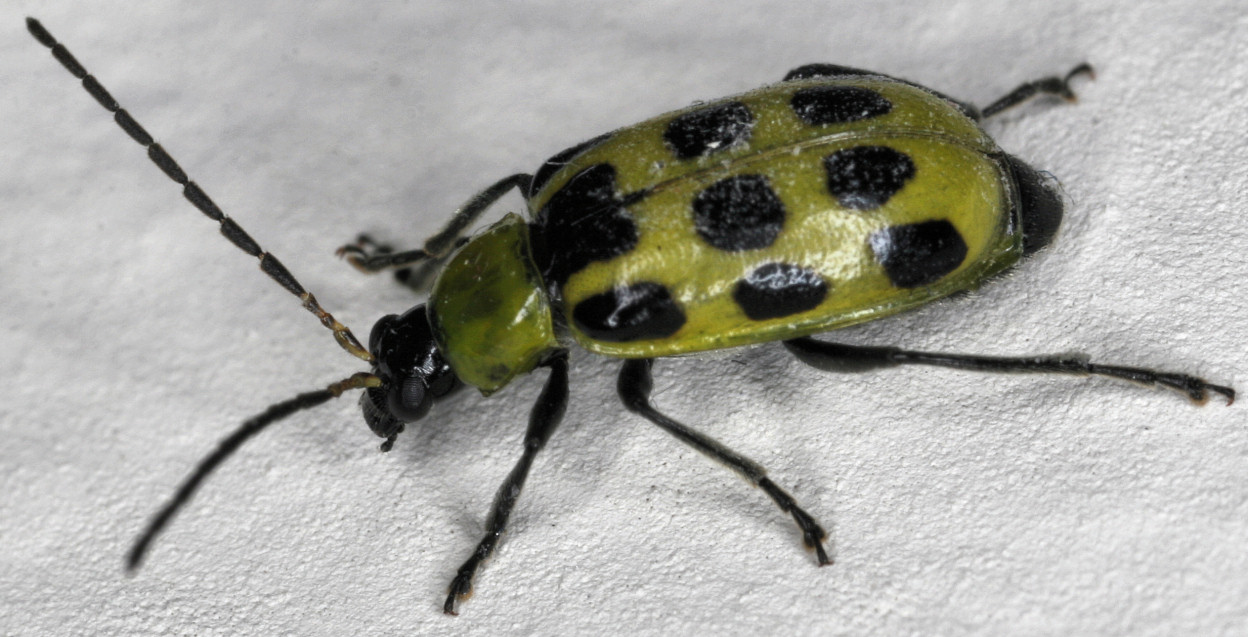The Good, The Bad, and of course, those that are Soy Ugly!
Interactions
Soybean plants have a special and extremely beneficial relationship with bacteria. The bacteria, Rhizobium (which is specific to the soybean), grows and associates with the soybean roots. With this interaction, the plant has an increased ability to fix nitrogen from the atmosphere. Not only does the soybean benefit, but so does the bacteria. It is given a place to live and receives sugars and nutrients from the plant.
Soybean Cyst Nematode
The Soybean Cyst Nematode, Heterodera glycines, is a small plant-parasitic roundworm that attacks the roots of soybeans. Soybean plants that are affected with this parasite do not show specific characteristics or symptoms above the ground. Infected plants might be thought to endure damage from nutrient deficiencies, stress, herbicide injury, or other plant diseases. Below the ground, affected plants have stunted root growth and a decreased number of nitrogen-fixing nodules.
Soybean Rust is a disease caused by fungi. Phakopsora pachyrhizi is one of the fungal species known to partake in this disease. Symptoms of this disease include lesions that are irregularly shaped spots that turn tan to brown or reddish as the disease progresses. These lesions are usually confined to the veins or close to the veins, and are very, very small. The fungi that affects the plant develops spores to reproduce and form on the underside of the leaf. Soybean rust causes premature defoliation leading to yield losses, fewer pod seeds, a decreased number of filled pods per plant, and early maturity.
Numerous kinds of insects have interactions with soybeans. Most are beneficial or harmless, but some can cause yield loss and even crop failure if not controlled. The treatment of soybeans that have a negative relationship with insects is done with chemical insecticides. Overtreatment is expensive and polluting, and may lead to future insect problems. Also, mistimed treatments can lead to severe insect infestations later in the same season. Below are only a few interactions of soybeans and insects. To read about more, click here!
These worms are olive-green to near black. It is a velvety smooth caterpillar with a stripe down each side. Two black spots are present on the second segment. Beet Armyworm is chiefly a pest of late-planted seedling soybeans. Small larvae skeletonize the lower leaves, while large larvae feed over the whole plant. Severely damaged plants are very ragged in appearance.
Spotted
Cucumber
Beetle (Diabrotica
undecimpunctata howardi)
This beetle is yellowish-green with 12 black spots on the wing covers. The Cucumber Beetle eats foliage but is seldom abundant enough to cause yield loss. Damage by this insect may be significant if many other defoliating pests are present.
Japanese
Beetle
(Popillia japonica)
The Japanese Beetle is a shiny green or greenish-bronze beetle with reddish-brown wing covers. White tufts of hair are present on the sides and tip of the abdomen. Japanese beetles eat the leaf areas between the veins and cause skeletonizing of the leaves. It seldom causes yield loss since defoliation is usually light. Plants usually recover from damage before blooming.
Want to see some of the commercial products of soybeans? Click here!





